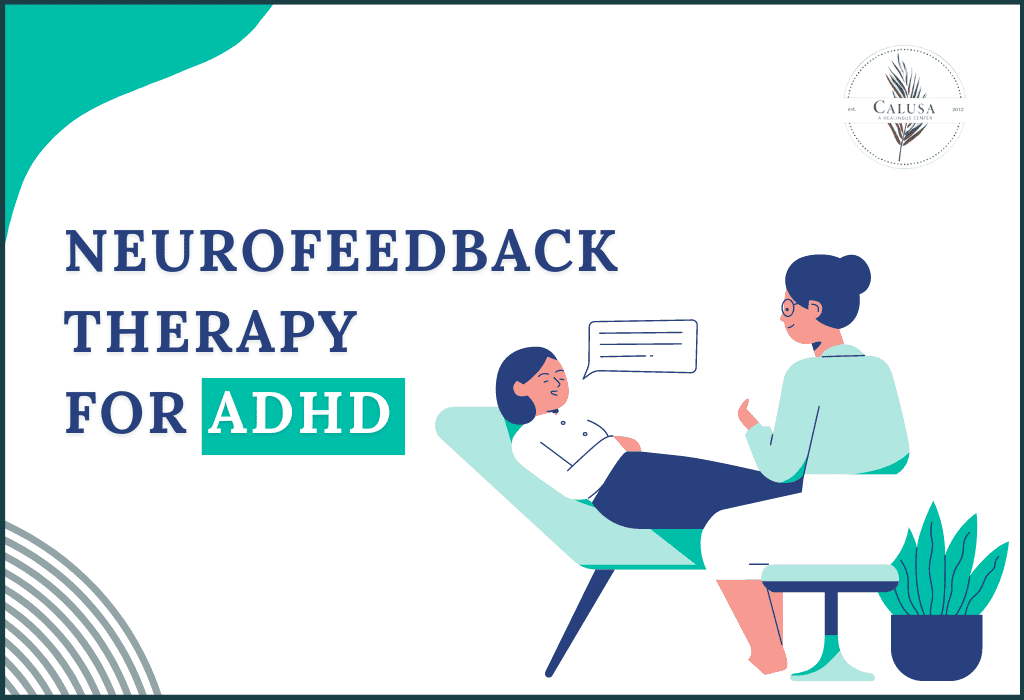This is a condition that affects many people, known as attention deficit hyperactivity disorder or ADHD. It downplays one’s ability to focus, sit still, or control impulsive behaviors. This can be hard on both kids and adults alike. However, there is hope. One of the ways through which ADHD can be managed is via neurofeedback therapy. In this blog post, we will explain what neurofeedback therapy entails in addition to how it functions and benefits individuals with ADHD. Furthermore, we shall discuss its safety, advantages, and common questions about it.
What Is Neurofeedback Therapy?
Neurofeedback treatment is a unique approach to making the brain work better. It can be compared to brain exercise sessions. By doing neurofeedback training you familiarize your mind with effectiveness when carrying out its tasks. Moreover, it does not require any surgical operations or other physical interventions; hence non-invasive. It’s all about teaching the brain to control its activity.
While undergoing neurofeedback therapy one sits on a comfortable chair and looks at a screen. The small sensors placed on your head monitor your brain activity levels. When your brain works well you get positive feedback such as sound or change in the video you are watching plays out among others Onwards this helps in assisting the mind to stay focused as well as calm.
What is ADHD?
ADHD is an acronym for Attention Deficit Hyperactivity Disorder which is a condition that makes it difficult for people to concentrate, be still, and control their urges. It is a highly prevalent disorder, especially among children but can also affect adults. Individuals with ADHD are often challenged in school, work, and relationships due to their hyperactive minds which make it hard for them to concentrate.
There are three main types of ADHD
- Inattention Type: A person experiencing this type of ADHD has difficulty sustaining attention and following through on instructions.
- Hyperactive-Impulsive Type: People suffering from the hyperactive-impulsive type display much activity and may act rashly.
- Combined Type: This includes both inattentiveness and hyperactivity
How Does Neurofeedback Therapy Work For ADHD?
Neurofeedback therapy helps individuals with ADHD retrain their brains so they improve. Here’s how:
- Monitoring Brain Activity: Brainwaves are measured using sensors placed on the scalp during the session.
- Feedback Process: While you watch a movie or play a video game, these senses monitor your brain activity. If your brain remains focused and calm, the movie plays continuously; otherwise, it might stop for some time or the game will slow down.
- Brain Training: The brain becomes proficient at staying focused by trying to keep the movie running smoothly. This repeated practice helps your brain improve over time.
Neurofeedback therapy for ADHD is anything but a quick fix, it often involves repeating sessions before the brain can learn and change. Nonetheless, many people find that they become better at focusing on issues as well as controlling their impulses over time.
Is Neurofeedback Therapy Effective for ADHD?
Various studies have revealed that neurofeedback therapy ADHD can effectively treat ADHD. Here are some of them:
- Enhanced Focus: People who go through neurofeedback therapy always report improved focus and attention.
- Reduced Hyperactivity: This treatment helps minimize hyperactive behaviors so that individuals with ADHD can remain more relaxed.
- Long-Term Benefits: The alterations in the activities of the brain caused by neurofeedback therapy may result in permanent improvements in symptoms related to ADHD.
Nevertheless, not everyone responds similarly to neurofeedback therapy. While some people experience significant improvements, others notice little or no change at all. It all depends on the person and how well they respond to this technique.
Benefits of Neurofeedback Therapy for ADHD
ADHD patients have several advantages when they take part in neurofeedback therapy ADHD. Some include:
- Not Invasive: Unlike medication, there are no pills or any physical procedures used during treatment hence making it gentler and safer on the mind.
- No Side Effects: One of the greatest advantages is that there are no side effects. But neurofeedback therapy for ADHD involves brain training using natural methods, unlike medications which can sometimes lead to undesired side-effects.
- Personalized Treatment: The therapy is tailored specifically to each individual’s unique brain activity. This personalized approach tends to make it more efficient.
- Improved Quality of Life: Many individuals who have undergone neurofeedback therapy for ADHD report better performance in school, work, and their personal lives. They feel like they are in command of their own lives and become better at managing symptoms.
Is Neurofeedback Therapy Safe for ADHD?
Neurofeedback therapy is safe for ADHD, Here is why:
- Non-Invasive: You won’t need surgery, shots, or pills.
- No Chemicals: There are no chemicals involved in neurofeedback therapy for ADHD meaning there would be no risk of a reaction due to allergy or any side effect.
- Painless: It does not hurt or cause discomfort; most people find it relaxing and enjoyable.
- Backed by Research: Numerous studies have been carried out on neurofeedback therapy for ADHD, showing that it is both safe and effective for many people with this condition.
Conclusion
However, as with any treatment, you should consult a healthcare practitioner before deciding whether or not you will undertake neurofeedback therapy for ADHD.
Neurofeedback for ADHD is an appealing choice for anyone who wants to control symptoms of ADHD. It can enhance focus, reduce hyperactivity, and improve quality of life with just a brain training method. This is a safe, drug-free treatment that does not require the use of any medication or chemicals.
Do not hesitate anymore if you are ready to find out how Neurofeedback Therapy for ADHD can change your life or the life of someone you love. Find a qualified neurofeedback therapist and book an appointment so that you may be taken through this new kind of therapy which might help you achieve better concentration and balance in your life. Begin your journey towards a more focused and fulfilling future by calling Calusa today!
FAQs
Que: Which type of therapy is the best for ADHD?
Ans: CBT is typically considered to be the gold standard for psychotherapy in ADHD. But, CBT may also differ depending on the approach or its target. This helps improve everyday struggles such as procrastination, poor time management, and not-so-good planning.
Que: Does neurofeedback work for ADHD?
Ans: The studies cited above are mostly not double-blinded, but they still suggest that neuro-feedback could be a promising treatment option for children and adolescents with ADHD. Nevertheless, this should be seen as something that supplements medication and /or behavior therapy rather than an alternative to it.
Que: Can you manage ADHD without medication?
Ans: There exist numerous means of keeping ADHD under control without medications like creating healthy sleep habits, addressing nutritional deficiencies, and getting regular exercise among others. What works for one person may not work for another so individuals may want to try each new method one at a time.
Que: What are the side effects of neurofeedback for ADHD?
Ans: These include fatigue, headaches, increased stress levels, and slight dizziness or disorientation. The great news is that these side effects do not happen to everyone – even if they do, they are often mild and go away temporarily.










